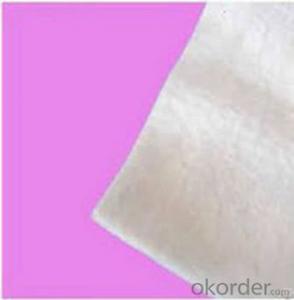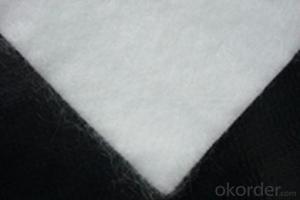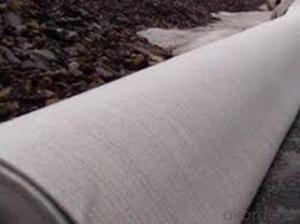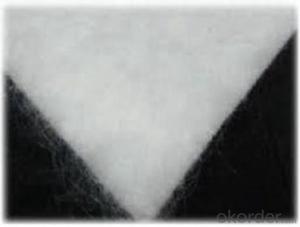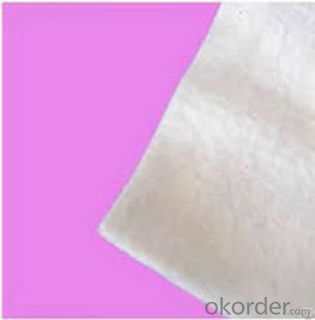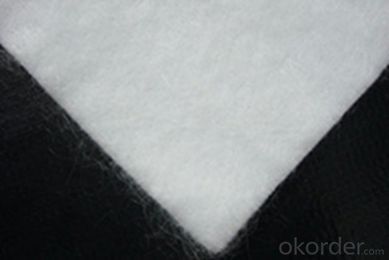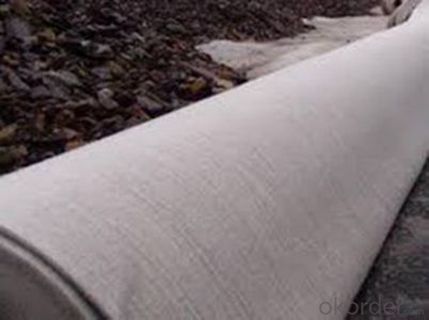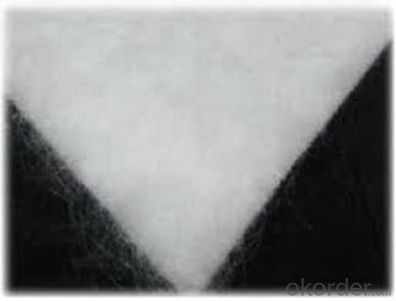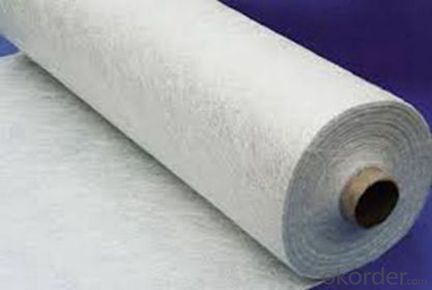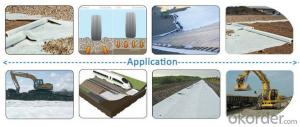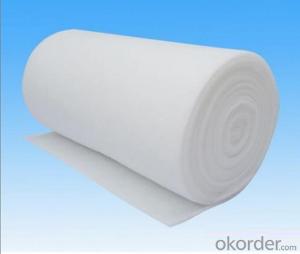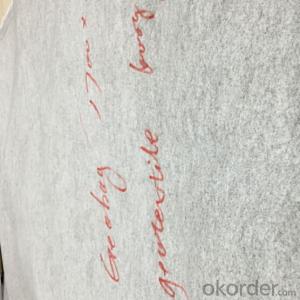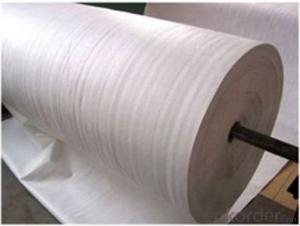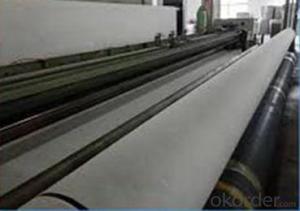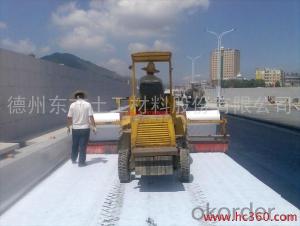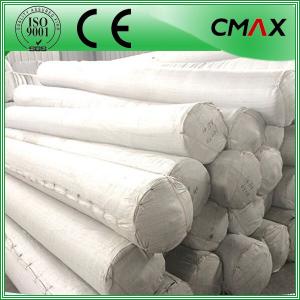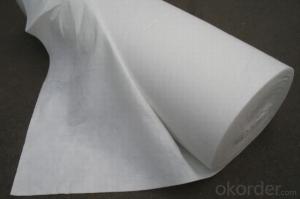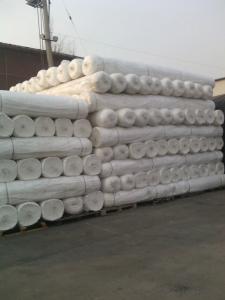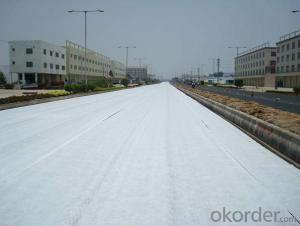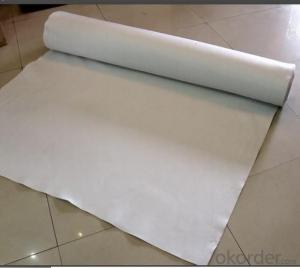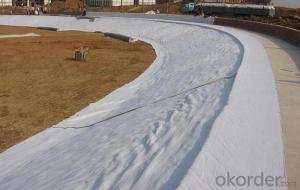Geotextile Stone Needle Punched Nonwoven Geotextile Polyethylene for Reinforcement and Drainage
- Loading Port:
- China main port
- Payment Terms:
- TT OR LC
- Min Order Qty:
- 2000 g/m²
- Supply Capability:
- 1000000 g/m²/month
OKorder Service Pledge
OKorder Financial Service
You Might Also Like
Specification
Nonwoven geotextile for filtration Product Technical Parameter
Item | 100 | 150 | 200 | 250 | 300 | 350 | 400 | 450 | 500 | 600 | 800 | Remark |
Deviation of Mass Per Unit % | 8 | 8 | 8 | 8 | 7 | 7 | 7 | 7 | 6 | 6 | 6 | |
Thickness(mm≥) | 0.9 | 1.3 | 1.7 | 2.1 | 2.4 | 2.7 | 3.0 | 3.3 | 3.6 | 4.1 | 5.0 | |
Rate deviation (%) | -0.5 | |||||||||||
Fracture strength(KN/m ≥) | 2.5 | 4.5 | 6.5 | 8.0 | 9.5 | 11.0 | 12.5 | 14.0 | 16.0 | 19.0 | 25.0 | |
Fracture pulling ratio % | 25~100 | MD/CD | ||||||||||
CBR bursting strength( KN≥) | 0.3 | 0.6 | 0.9 | 1.2 | 1.5 | 1.8 | 2.1 | 2.4 | 2.7 | 3.2 | 4.0 | |
EOS O90(O95) mm | 0.07~0.2 | |||||||||||
Coefficient of vertically permeability (cm/s) | K×(10-1-10-3) | K=1.0-9.9 | ||||||||||
Tearing strength (KN≥) | 0.08 | 0.12 | 0.16 | 0.20 | 0.24 | 0.28 | 0.33 | 0.38 | 0.42 | 0.46 | 0.60 | MD/CD |
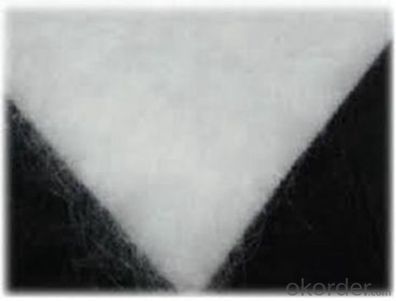

FAQ:
Q: What kind of payments does jenor support?
A: T/T, L/C, Cash are accepted.
Q: Do you charge for the samples?
A: Accordeing to our company policy, the samples are free, we only charge the freight fee. And we will return the freight fee during the next order.
Q: Can you produce according to customers' design?
A: Sure, we are professional manufacturer, OEM and ODM are both welcome.
Q: Do you have other products?
A: Yes, please check the pictures:
- Q: What are the benefits of using geotextiles in erosion control?
- Geotextiles offer several benefits in erosion control, including their ability to prevent soil erosion, stabilize slopes, and promote vegetation growth. They act as a barrier against water flow, reducing the impact of rainfall and preventing sediment runoff. Geotextiles also enhance soil reinforcement by distributing load and reducing soil movement. Furthermore, they allow for better filtration and drainage, improving water quality and reducing the risk of flooding. Overall, geotextiles provide cost-effective and environmentally friendly solutions for erosion control.
- Q: Are geotextiles suitable for use in waste containment systems?
- Yes, geotextiles are suitable for use in waste containment systems. They provide excellent filtration and separation capabilities, preventing the migration of fine particles and facilitating proper drainage. Geotextiles also enhance the stability and integrity of waste containment systems by acting as a barrier against puncture and tear. Additionally, they help to control erosion and soil erosion, ensuring the long-term effectiveness of waste containment structures.
- Q: How do geotextiles help in the reduction of subgrade pumping?
- Geotextiles help in the reduction of subgrade pumping by acting as a filter and allowing water to pass through while preventing soil particles from being washed out. This helps to maintain the stability and strength of the subgrade, preventing the pumping of fine particles and water to the surface.
- Q: How do geotextiles prevent soil contamination?
- Geotextiles prevent soil contamination by acting as a barrier that separates the soil from potentially harmful substances, such as pollutants or contaminants. It helps to filter and retain these substances, preventing them from leaching into the soil and affecting its quality. Geotextiles also aid in erosion control, reducing the risk of soil contamination caused by sediment runoff.
- Q: What are the factors to consider when designing geotextile-reinforced walls?
- When designing geotextile-reinforced walls, several factors need to be considered. 1. Soil characteristics: It is important to assess the soil properties such as its strength, permeability, and compaction. This information helps determine the appropriate geotextile material and reinforcement spacing required for stability. 2. Wall height and slope: The height and slope of the wall impact the design of the geotextile-reinforced structure. Steeper slopes may require additional reinforcement layers or geogrids for increased stability. 3. Loadings and surcharges: The anticipated loads and surcharges on the wall, such as traffic loads or nearby structures, should be considered to determine the necessary strength and stability requirements for the geotextile-reinforced wall. 4. Water and drainage: The presence of groundwater or surface water must be evaluated as it can affect the stability and durability of the wall. Proper drainage systems need to be incorporated to prevent water buildup behind the wall. 5. Environmental considerations: The potential impact of the geotextile-reinforced wall on the surrounding environment should be assessed. This includes factors like vegetation, wildlife habitats, and erosion control measures. 6. Construction methods and access: The availability of construction equipment and access to the site will influence the choice of geotextile materials and construction techniques. Considering these factors ensures the geotextile-reinforced wall is designed to withstand the required loads, maintain stability, and have long-term durability.
- Q: White geotextile surface from the particles?
- First of all, to see your problem after I went to the workshop to see the next, geotextile surface is generally not from the particles. Later, after I carefully looked and found that the geotextile surface occasionally there will be a little white dot-like material, about 0.2-0.5mm in diameter, a square meter of geotextile above will not have more than five such particles, which may With the geotextile fiber, if the particles are not a lot of words will not affect the quality of geotextile products. Suggest that you do not have to worry about it.
- Q: Are geotextiles suitable for use in geotextile-reinforced soil walls?
- Yes, geotextiles are suitable for use in geotextile-reinforced soil walls. Geotextiles provide strength, stability, and erosion control to the walls, making them an effective and commonly used material in reinforcing soil structures.
- Q: Can geotextiles be used in mining and landfill closure applications?
- Yes, geotextiles can be used in mining and landfill closure applications. Geotextiles are commonly used in these applications to provide erosion control, soil stabilization, and filtration. They act as a barrier to prevent soil erosion and help in containing mine waste or landfill materials. Additionally, geotextiles can improve the overall efficiency and safety of these operations by reducing the risk of environmental contamination.
- Q: Geotextile special staple fiber where needed
- Geotextile special staple fiber where needed
- Q: What is geotextile, what role
- Geotextile is a new type of building materials, raw materials are polyester, acrylic, nylon and other polymer polymer synthetic fiber. In accordance with the manufacturing method is divided into: there are two types of geotextile and non-woven geotextile. Geotextile with anti-seepage, anti-filtration, drainage, isolation, reinforcement, protection, sealing and other functions, it with the conventional masonry and concrete material seepage effect compared to a low investment, simple construction process, short duration Infiltration effect is good, the channel effective use of high coefficient. Water conservancy engineering dams and slope protection filter, channel isolation, seepage control; road, railway, airport runway foundation isolation, filter, drainage, slope, retaining wall and road reinforcement, drainage; , Geotextile has been widely used in the field of infrastructure construction, and has been gradually applied in the field of infrastructure construction, and the use of geotextile In a wider area.
Send your message to us
Geotextile Stone Needle Punched Nonwoven Geotextile Polyethylene for Reinforcement and Drainage
- Loading Port:
- China main port
- Payment Terms:
- TT OR LC
- Min Order Qty:
- 2000 g/m²
- Supply Capability:
- 1000000 g/m²/month
OKorder Service Pledge
OKorder Financial Service
Similar products
Hot products
Hot Searches
Related keywords

